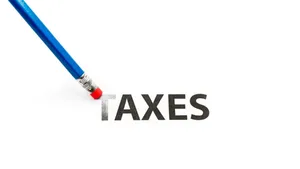Starting a side hustle—whether freelance consulting, gig work, or selling goods—is a great way to grow your income. However, it completely changes how you file taxes. You are no longer just an employee; you are a business owner.
Here is a simple guide to understanding the three key differences in filing taxes when you have side hustle income.
Reporting Your Side Hustle Income
Unlike a W-2 job where taxes are withheld for you, a side hustle requires you to track and report all income, even if you never receive a tax form.
1. The Reporting Threshold
The critical rule for self-employment is the $\$400$ threshold:
- You must file a tax return and pay Self-Employment Tax (Social Security & Medicare) if your net earnings (profit) from a side hustle are $400 or more.
- You must report all your income, even cash payments or earnings under $400.
2. Forms You Will Receive (The 1099s)
The standard W-2 form applies only to income where your employer withheld taxes. Side hustle payments are generally reported on these forms:
- Form 1099-NEC (Nonemployee Compensation): Sent if a client or company paid you $\$600$ or more during the year for services you performed as an independent contractor.
- Form 1099-K (Payment Card/Third Party): Sent by payment processors (like PayPal, Venmo, or online marketplaces) to report transactions processed through their networks. Note: Check the current year's IRS threshold, as this number is subject to frequent change.
The crucial point: Even if a client pays you $599 and doesn't send a 1099, you are still required to report that income to the IRS.
The Core Filing Document (Schedule C)
Your side hustle income is not listed on the W-2 section of your tax return. It must be processed through Schedule C (Profit or Loss From Business).
How Schedule C Works
Schedule C is the business's income statement and serves three main purposes:
- List All Income: You record all income received from all clients and payment apps, regardless of whether you received a 1099 form.
- Claim Deductions: You subtract all your qualified business expenses (see Part 3).
- Calculate Net Profit: The form calculates your Net Profit or Loss (Income - Expenses). This final number is what gets carried over to your personal Form 1040 and becomes subject to income tax.
Even if you do not consider your side gig a formal "business," the IRS requires income reported on a 1099-NEC or 1099-K to be filed using Schedule C.
The Biggest Difference—Self-Employment Tax
As an employee, your employer pays half of your Social Security and Medicare taxes (FICA). As a self-employed individual, you pay both halves—the full 15.3% tax rate.
- Schedule SE: You use Schedule SE (Self-Employment Tax) to calculate this 15.3% tax on your net profit (calculated on Schedule C).
- The Deduction: To offset the burden of paying both halves, the IRS allows you to deduct half (7.65%) of your Self-Employment Tax from your Adjusted Gross Income (AGI).
Estimated Quarterly Payments
Since no one is withholding taxes for you, the IRS expects you to pay your taxes periodically throughout the year.
- The Rule: If you expect to owe $1,000 or more in taxes for the current year, you must make quarterly estimated payments using Form 1040-ES.
- The Dates: Payments are generally due on April 15, June 15, September 15, and January 15 of the following year. Failing to make these payments can result in underpayment penalties.
Maximizing Deductions (The Tax Saving Key)
The best way to lower your tax bill is to reduce your taxable Net Profit by deducting every eligible expense.
| Expense Category | Examples of Deductions |
| Home Office | A portion of rent, utilities, insurance, or the simplified flat rate (must meet the exclusive use test). |
| Mileage | Business-related travel (e.g., driving to meet a client or buy supplies), claimed via the standard mileage rate or actual expenses. |
| Technology/Tools | Laptops, software subscriptions, camera gear, protective equipment, and specialized tools. |
| Advertising | Website fees, business cards, social media advertising costs. |
| Professional Fees | Fees paid to accountants, lawyers, or online payment processors. |
| Retirement | Contributions made to a SEP IRA or Solo 401(k). |
Final Tip: Because accurate record-keeping is your only defense against an audit, use professional accounting software to track and categorize all income and expenses in real-time. Do not wait until tax season.






